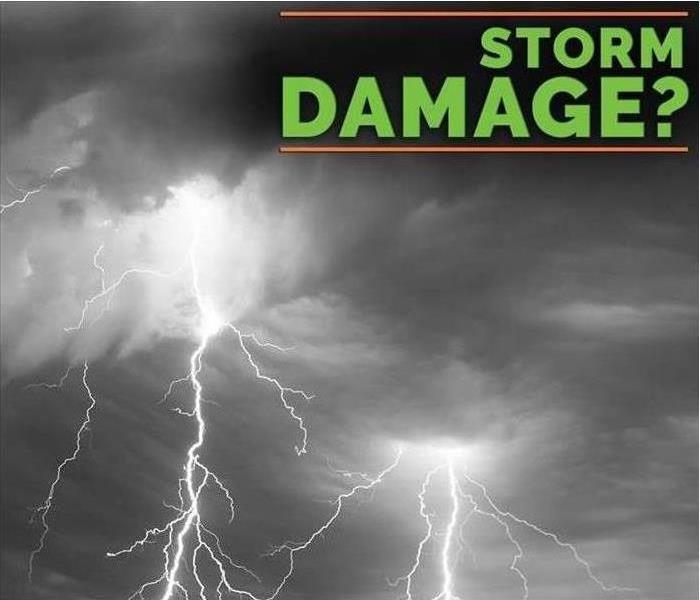The Impact of Summer Storms
6/11/2020 (Permalink)
There is always potential for flooding after a thunderstorm dumps a large amount of rain in a short amount of time. Thunderstorms are most common during the summer due to the surplus of moisture in the air as well as rising warm air. These two factors combined together create the potential for increased damage caused by the storm. With their prevalence throughout the summer season, it is important to understand the threats to homes and businesses posed by the lightning and flash flooding brought on by thunderstorms.
Damage Caused by Flooding
When a flood strikes your home or business, water levels can rise quickly and inflict a significant amount of damage. The flood water can carry mud and sediment, therefore contaminating the water and whatever it touches in your home or business. From this water damage, mold can grow and spread if the affected area is not remediated quickly. Flood water commonly affects drywall, flooring, and electrical systems such as cooling and heating systems, so it will be crucial to assess these areas for damage after a flood. On a larger scale, flood water can move houses or buildings off of their foundation, so be sure to watch for signs of that as well.
Damage Caused by Lightning
Lightning can cause both physical and electrical damage to homes and businesses if the building is directly hit by lightning during a thunderstorm. Lightning can burn through roofs, rip shingles or gutters from the building, and even tear into attics. In terms of electrical damage, lightning can increase the risk of an electrical fire igniting. Electronic appliances inside of your home, such as computers and refrigerators, can be harmed or destroyed if left plugged into an outlet during a thunderstorm.
What to Do After the Storm
Immediately following the storm, survey your home or building for any visible indicators of lightning or water damage. This includes making sure that electrical breakers, outlets, and light switches are still functioning, checking plumbing systems for any leakage, and looking for any visible signs of water damage to items within the house or building. While cleaning up any damage, be sure to turn off all water and electrical systems so that when the electricity is restored, the water and electricity do not react with one another, which would result in further damage.
If your home or business has been affected with damage after a thunderstorm, call SERVPRO of Chesterfield and SERVPRO of Tri-Cities Plus to professionally handle the damages at 804-378-2323.






 24/7 Emergency Service
24/7 Emergency Service
